Attention is at a premium. You are just one of the many fighting for a piece of your prospect’s mind.
It doesn’t matter how good your product is, if your prospects are unaware of it.
All of your sweat, blood and tears have come down to this: how effectively can you paint a picture of a better world in your prospect’s mind’s eye?
And will they sign (up)?
It’s not something to leave to chance. Regardless of medium – a promo video, a landing page, a presentation deck – your pitch needs to be carefully constructed, finely tuned and in perfect shape.
What follows are 16 key ingredients for creating an irresistible sales pitch, guaranteed to capture the attention and imagination of your prospect, and convert promotion into sales.
Step #1. Hook Them
Without hooks, there are no sales. I am not talking about the painful, metal hooks used on a fishing trip. I’m talking about the emotional, personal and highly targeted mental hooks that are going to get into the minds of your audience and stay there. When looking to reel in potential customers, think about making an emotional connection.
Positive emotions increase long-term conversions and customer lifetime value.
Google Chrome’s ads do an exceptional job. The ad below This ad lists no features, but instead tells a story filled with the most emotional moments in your family’s life.
What emotions can you tap into? Those can be positive emotions like in Google’s ad, but could as well be linked to a deep frustration or a problem.
Step #2. Push Where It Hurts
Solving the right problem can make you rich. So, in your pitch, push where it hurts the most.
Wherever possible, use the customer’s own words to describe their problems and frustrations. In the United States, beginning in 2002, Verizon Wireless milked the simple phrase “Can you hear me now?” for almost a decade, to describe the frustrations that their customers were having with other networks. And get this: in the first year alone:
this lead 10% increase in new customers and a reduction in churn rate from 2.5% in 2000 to 1.8% in 2002
Step #3. Add Salt to The Wound
Describe the impact the problem has on your prospect. Chocolate manufacturer M&Ms began using this principle as early as 1954, with their now famous slogan, “The milk chocolate melts in your mouth, not in your hand.”

What mess will you prospect get into unless they address their problem?
Where relevant, use numbers to quantify the problem. Google Chrome ad says “even the fastest computers still need 45 seconds to start. 45 seconds! That’s enough to make a sandwich”.
Step #4. Set them Up
Get them ready for your pitch: point out the problems with rival solutions. CrazyEgg does this well:
Analytics tools will not tell you why your visitors aren’t buying, subscribing, calling… this is where most businesses get stuck, and stay stuck.
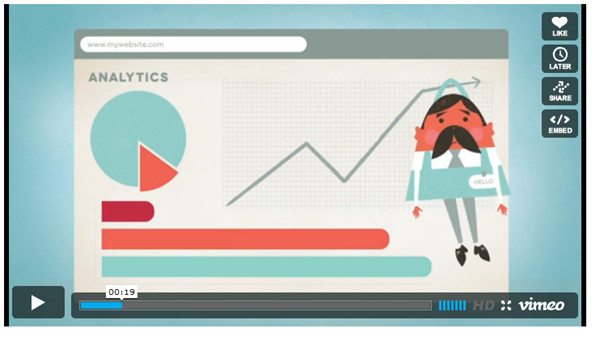
Where do existing solutions fall short?
Step #5. There’s Got to be a Better Way!
This is where you take the stage. After setting up the headache, the cause of frustration, the painful reminder, it’s time to rush to the rescue with the cure: your solution.
First, just stoke their desire.
This is the job of your UVP (unique value proposition). As Steve Blank puts it:
“UVP is a single, clear and compelling message that states why you are different and worth buying.”
Here are some great examples:
- Hot fresh pizza delivered to your door in 30 minutes or it’s free (Domino’s). Notice the structure: end result your prospect desires + specific period of time + remove objections
- User research results in 1 hour: get videos of real people speaking their thoughts as they use your website or mobile app (UserTesting.com). Notice how their subheading explains exactly what you get (the videos).
- Not More Numbers, But Actionable Metrics (USERcycle). Notice how the differentiation (against competing solutions) is built into this UVP.
Step #6. Deliver on Your Promise
Don’t let it be too good to be true. In plain language, and as simply as you can, explain exactly how your service works.
Your solution needs to be simple and easy to understand. No buzzwords. No jargon.
UserTesting.com does this twice above the fold of their landing page! In a short video, they show you an example of a what you get (a usability testing session). Then they use a classic 3-step approach to describe how their service works.
The 1-2-3 approach is a classic. Just look at what Unbounce does with it:
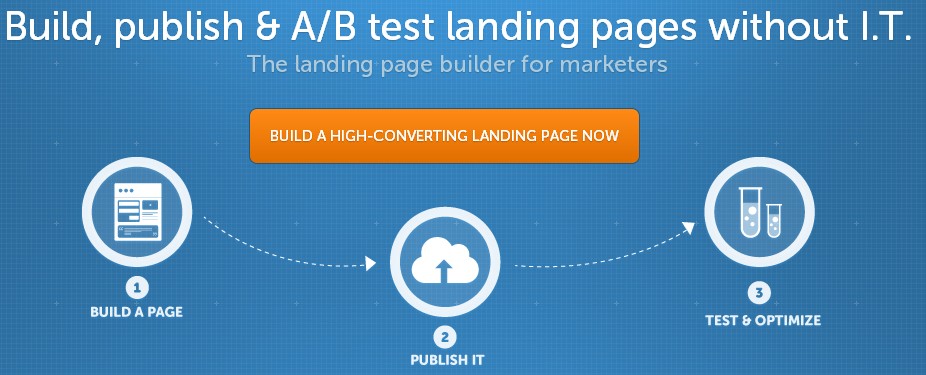
Unbounce smacks their visitors with it the moment they land land: the 3 steps right below their headline.
Step #7. Dazzle Them with Your Genius
Why should the prospect buy from you, and not your competitors?
Give your prospect a glimpse of your ‘secret sauce’: the special ingredient that make your product stand out from the crowd.
This is where you surprise and delight your prospect.
Apple are exceptional at doing this. In 2001, when they launched their first generation iPod, they announced that it gave their customers the ability to keep “1,000 songs in your pocket;” a concept which was unheard of at the time.
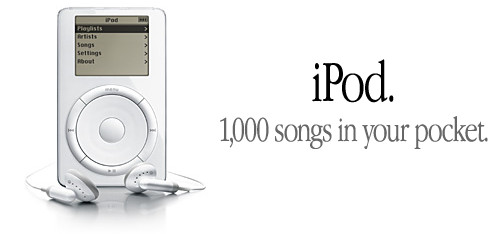
What makes you unique?
Step #8. Show Them the Value
Creating an irresistible sales pitch is all about making your prospect acutely aware of the value that they will derive from your product or service, in a clear and quantifiable way.
As Dave McClure likes to say:
Help your customers get “paid, made or laid.”
Which of the following value patterns does your product fit into?
- For B2B products: making money, saving money, reducing the time and effort or reducing risk?
- For B2C products: addressing a human need (e.g. increasing social status, entertaining, helping make connections, helping in personal development…), saving money or time, or increasing convenience?
And don’t just use generic wording like “We help our customer increase their competitive advantage…”. Yawn!
Make the value as explicit, concrete and as quantified as you can.

Doubling conversion rates is a no-brainer value for any online business.
The landing page of the landing page experts Unbounce doesn’t miss the opportunity to pepper visitors with value statements.
Step #9. Bring Out Your Evangelists
If pictures are worth a thousand words, then credible customer testimonials are worth even more.
Build up quality testimonials to ground your promotional copy in real-world results and experiences.
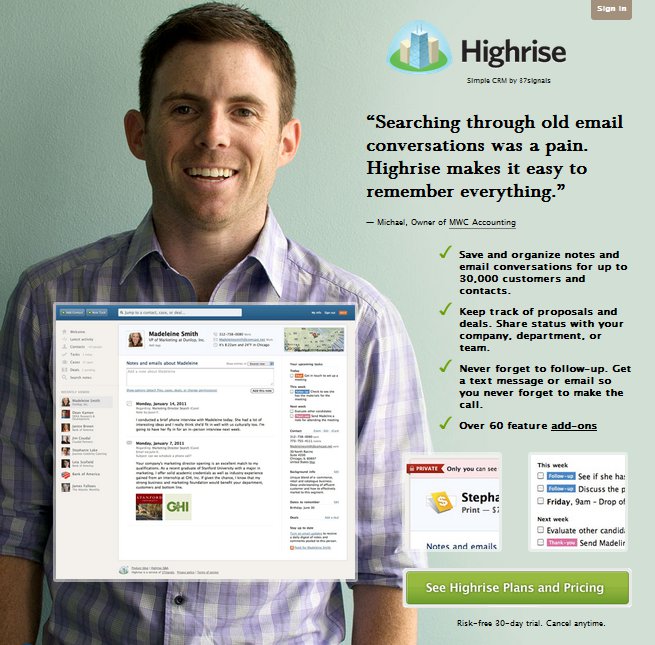
37signals go as far as to use their customer’s testimonials as the headline and the main graphics.
Watch out: the more embellished your product by your testimonials, the less credible it sounds. Here’s an interesting technique from Sean D’ Souza, an internet marketeer: reverse testimonials.
Step #10. Unearth Your Prospect’s Fears
There is no sales without sales objections. Every single prospect is anxious about making a purchase.
People are not afraid of spending money. They are afraid of looking dumb. Or being cheated.
So you need to address these objections head on.
And you have to start by identifying them. Objections are often hidden in the form of questions. So every time you’re talking to a customer, listen carefully to questions they may have.
Make sure that anywhere you “touch” your customer, whether it’s a website, phone call or presentation, you always give them the option to raise questions. Install a chat function, put up a number, invite them to raise questions.
Step #11. Turn Objections into Reasons to Buy
Pre-empt questions and objections. The most successful companies use this to their own advantage. Bar chain Hooters, for example, rather than taking exception to some customers’ preconception that their bars were tacky, decided to deal with the issue head on, with the strapline “delightfully tacky, yet unrefined.”
Below are some common objections and how you might address them.
| Objection | Counter argument |
|---|---|
| Financial: will I get my ROI (return on investment)? The “I” part of the “ROI” formula is clear: it’s the fat figure on the last page of your contract. Your prospect is anxious if the investment will really bring the promised return. And: how fast this will happen? | Facebook does an exceptional job of promising a specific return on investment, with Brad Smallwood, head of measurement and insights at Facebook, asserting that just advertising on Facebook gives companies a 22% lift in ROI. |
| Product-needs risk. Your prospect might be thinking “yes your product may work for , but will it work for me? | The easiest way to deal with this particular objection is to outline the features of your product in detail, so that your prospects can see how they would benefit. And give them a free trial. |
| Competitor risk: fear of choosing the wrong option. In his TED talk, Barry Schwartz points out the problems prospects face when given too much choice. Help your prospect by making the choice a no-brainer. | When it comes to competing for customers in the UK, Virgin Media and Sky have a huge rivalry. Virgin has no problem detailing how their service is better than that of Sky, to great effect. |
| Compatibility risk: how does your solution fit into the way your prospect works today? How much will they have to change their way of working? Or – if you’re selling software – how well does it integrate with their existing systems? | When addressing this, like Dropbox, it’s important to emphasise that movement to your service will have only a minimal, if any, impact on your prospect’s business. |
Step #12. Show Value for Money
The price of your product will play a significant part in how many customers you ultimately end up with.
But before you make the big reveal, prepare the ground accordingly.
First of all, make sure price is the last issue on the table. Talking about price before validating the need, demonstrating value and addressing objections is a recipe for failed sales.
A good practice therefore is to repeat the major benefits on your pricing slide / page. Vimeo used to re-list all of the benefits and features of paying plans front and center, while they left the price at the very bottom.
Step #13. Set Up An Anchor
An anchor price can be a higher value that plants the seed in your audience’s mind that this is an expensive, premium product:
- You could emphasize all of the different components in your service, for example, and how much they would cost individually.
- Another tactic is to first talk about how much does it cost your prospect today
Reveal the true price, and it suddenly seems much less expensive.
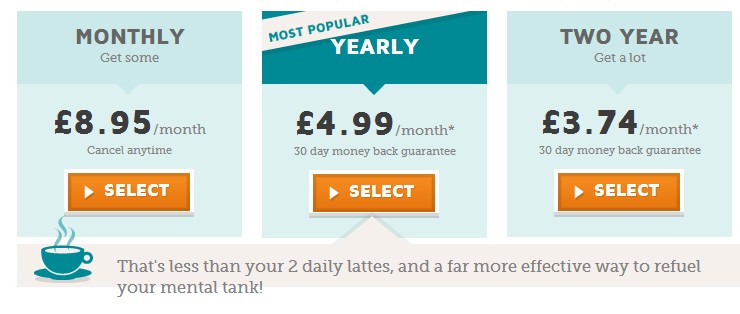
Headspace, a mindfullness meditation app, anchors their price by comparing it to 2 daily lattes.
You can also underline the value by comparing the cost of your product with the cost of something insignificant.
Step #14. Ask For Business
According to Richard Fenton, Retail News, a staggering 85% of sales interactions between prospects and salespeople end without the salesperson asking for the sale.
Don’t let this be you, not after you’ve come this far!
The end of your pitch or presentation isn’t the time to wind down: finish with a call to action and a distinctive next question or way forward. When making a call to action, ensure that you ask for something specific – there is no room for confusing your prospect about what they should do next. Make your offer is clear, concise, communicates value and reduces anxiety on the part of your prospect.
Dropbox does this well. The home page is pretty empty and white. Next to an animated drawing, dead center in the screen is a big blue “Sign up” button. No doubt about what’s next.
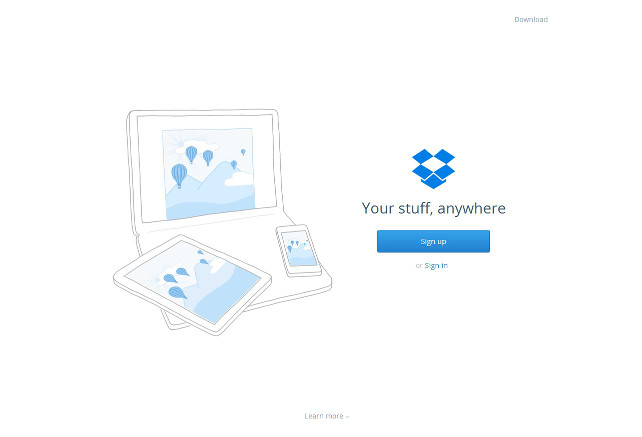
How clear is it for your prospects what they should do next?
Step #15. Don’t Celebrate Too Early!
And don’t assume you got them once they click on the order button. Look what AWeber does at their order page, which lists new customers in a scrolling column on the right as they sign up.
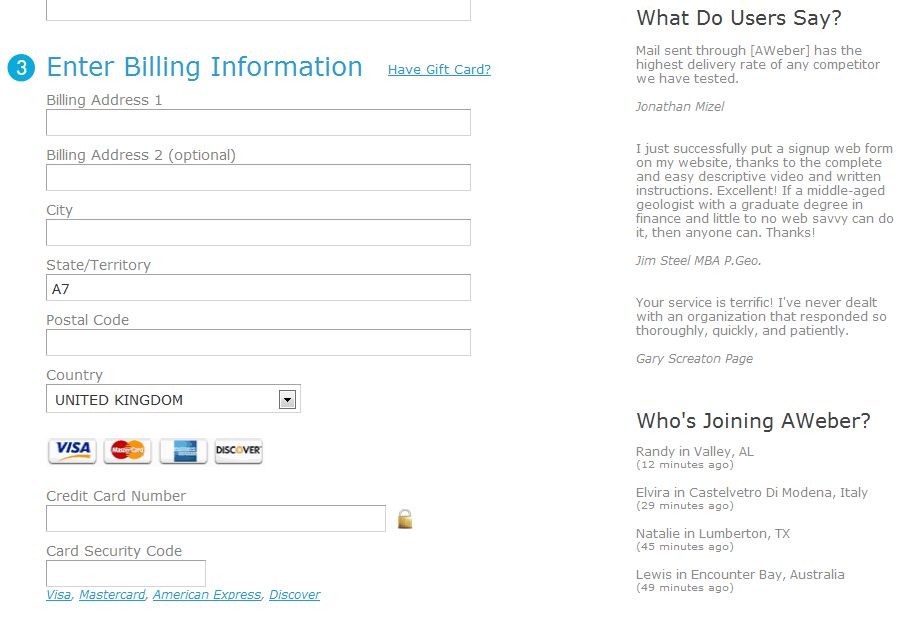
How can you ensure your customer doesn’t bail out?
Unbounce goes even further. If you start filling in the form, and you abandon the page, they will send you an email with a subject “Oops! Did we do something wrong?” trying to convince you to come back and finish the signup process.
If you’re selling face to face, this translates to follow up:
Did you know that 80% of sales (in business-to-business) happens only after you’ve followed up more than 5 times?
Step #16. Experiment. Iterate. Repeat.
If you want a scalable, growing business, you can’t leave sales to chance or work on them on a whim. You need a tried and trusted sales process that succeeds in multiple areas and can be repeated over and over again.
If you’re just starting out in business, the sales process comes with a steep learning curve. Don’t expect to get it right at the first attempt, even if you’re already an experienced professional.
Creating an irresistible sales pitch is all about trial and error. As you make mistakes, you should use these lessons to develop and validate your sales methods, honing your pitch ever so more.

